Article from Global ResearchHarvard's Gitmo Kangaroo Law School-The School for Torturers .
Read the article at http://www. globalre.. search. ca/.. index. php?.. context=va&aid=9359
Harvard’s Gitmo Kangaroo Law School-The School for Torturers ..By Prof.
Francis Boyle.. Global Research, June 16, 2008......Boumediene v Bush, 553 U.S.
Supreme Court, June 12, 2008VersusHarvard’s Gitmo Kangaroo Law School--The School for Torturers
 Not surprisingly, the January 2007 issue of the American Journal of Imperial Law--otherwise known as the self-styled American Journal of International Law but founded and still operated by U. S. State and War Departments’ apparatchiks and their professorial fellow-travelers-- published an article by Harvard Law School’s recently retired Bemis Professor of International Law Detlev Vagts (who only taught me the required course on Legal Accounting) arguing in favor of the Pentagon’s Kangaroo Courts System on Guantanamo despite the fact that they have been soundly condemned by every human rights organization and every human rights official and leader in the entire world as well as by the United States Supreme Court itself in Hamdan v. Rumsfeld (2006).
Not surprisingly, the January 2007 issue of the American Journal of Imperial Law--otherwise known as the self-styled American Journal of International Law but founded and still operated by U. S. State and War Departments’ apparatchiks and their professorial fellow-travelers-- published an article by Harvard Law School’s recently retired Bemis Professor of International Law Detlev Vagts (who only taught me the required course on Legal Accounting) arguing in favor of the Pentagon’s Kangaroo Courts System on Guantanamo despite the fact that they have been soundly condemned by every human rights organization and every human rights official and leader in the entire world as well as by the United States Supreme Court itself in Hamdan v. Rumsfeld (2006).
I am not going to bother to recite here all the grievous deficiencies of the Gitmo Kangaroo Courts under International Law and U.S. Constitutional Law. But suffice it to say that the Gitmo Kangaroo Courts constitute war crimes under the Laws of War, the Four Geneva Conventions of 1949, and even the U. S. Army’s own Field Manual 27-10, The Law of Land Warfare (1956). Field Manual 27-10 was drafted for the Pentagon by my Laws of War teacher the late, great Richard R. Baxter, who was generally recognized as the world’s leading expert on that subject, which is precisely why I voluntarily chose to study International Law with him and his long-time collaborator Louis B. Sohn, and not with the bean-counter Vagts. For the entire post-World War II generation of international law students at Harvard Law School, Louis Sohn shall always be our real Bemis Professor of International Law and never the False Pretender to that Throne known as Detlev Vagts.
Since those student days I have personally appeared pro bono publico in five U.S. military courts-martial proceedings involving warfare that were organized in accordance with the Pentagon’s Uniform Code of Military Justice (U.C.M.J.)--which still does not apply to the Gitmo Kangaroo Courts despite the ruling by the U. S. Supreme Court in Hamdan that the U.C.M.J. should be applied in Guantanamo--on behalf of five U. S.
military personnel who each acted as matters of courage, integrity, principle, and conscience at great risk to their freedom:
U.S. Marine Corps Corporal Jeff Paterson, the first U.S. military resister to President Bush Sr.’s genocidal war against Iraq; Army Captain Doctor Yolanda Huet-Vaughn, the highest ranking U. S. commissioned officer to be court-martialed for refusing to participate in President Bush Sr.’s genocidal war against Iraq; Captain Lawrence Rockwood, who was court-martialed by the U. S. Army for trying to stop torture in Haiti after the Clinton administration had illegally invaded that country in 1994; Army Staff Sergeant Camilo Mejia, the first U. S. military resister to be court-martialed for refusing to participate in President Bush Jr.’s war of aggression against Iraq; and Army First Lieutenant Ehren Watada, the first U.S. commissioned officer to be court-martialed for his refusal to participate in President Bush Jr.’s war of aggression against Iraq.
As I can attest from my direct personal involvement, each and every one of these five courts-martial under the U.C.M.J. were Stalinist show-trials produced and directed by the Pentagon that predictably and readily degenerated into travesties of justice. These five U.C.M.J. courts-martial involving warfare each proved correct the old adage attributed to Groucho Marx that military justice is to justice as military music is to music. By comparison, the Gitmo Kangaroo Courts will not even be run in accordance with the U.C.M.J. despite the fact that the U.S. Supreme Court ruled in Hamdan that they should be.
Whenever they are up and running the Gitmo Courts will constitute Stalinist Show Trials as well as Kangaroo Courts, and their preliminary proceedings have already proven them to be Travesties of Justice. Even worse yet, fully-functioning Stalinist Gitmo Kangaroo Courts will quickly become conveyor-belts of death for alleged and already tortured terrorist suspects along the lines of the Texas execution chamber operated by George Bush Jr. when he was the “governor” of that state and tortured to death 152 victims by means of lethal injection. Gitmo will become America’s Death Camp. But today under the Four Geneva Conventions of 1949, executing persons detained as a result of armed conflict without a fair trial before a regularly constituted court constitutes a grave war crime. To be sure, under the First Amendment to the United States Constitution Professor Vagts has the freedom to advocate war crimes so long as he does not participate in their commission, or incite them, or aid and abet them.
But precisely where is that line to be drawn for law professors?In this regard, the Harvard Law School Faculty currently has at least five professors who have advocated torture and war crimes:Vagts himself, who supported abusing the then recently captured President of Iraq Saddam Hussein despite his being publicly acknowledged to be a Prisoner of War by the Bush Jr. administration itself and thus absolutely protected by the Third Geneva Convention of 1949 and the Convention against Torture; the infamous Alan Dershowitz, a self-incriminated war criminal in his own right.
Dersh publicly acknowledged being a member of a Mossad Committee for approving the murder and assassination of Palestinians, which violates the Geneva Conventions and is thus a grave war crime; the Neo-Con Con Law non-entity known as Richard Parker;
Another one of my teachers, Waco Phil Heymann. Previously Waco Phil had been Deputy to U.S. Attorney General Janet Reno, the Butcheress of Waco. Reno ordered the Waco Massacre, while Heymann orchestrated its cover-up and thus earned his well-deserved sobriquet of Waco Phil.
All those incinerated women and children!The war criminal Jack Goldsmith who while working as a lawyer for the Bush Jr. administration at both the Pentagon and later its Department of In-Justice did much of the legal spade-work designing, justifying and approving the hideous human rights atrocities that the Bush Jr. administration has inflicted on everyone after 9/11. Goldsmith and his co-felon legal colleague from the Bush Jr. administration Professor John Yoo--now desecrating Berkeley’s Law School where my friend and colleague the late, great Dean Frank Newman had taught Human Rights--are functionally analogous to Nazi Law Professor Carl Schmitt, who justified every hideous atrocity that Hitler and the Nazis inflicted on anyone.
Despite my best efforts to prevent it, the Harvard Law School Faculty and Deans hired the war criminal Goldsmith right out of the Bush Jr. administration knowing full well that he was up to his eyeballs in the Gitmo Kangaroo Courts, torture, war crimes, enforced disappearances, murder, kidnapping, and crimes against humanity, at a minimum. And when Goldsmith’s proverbial “smoking-gun” Department of In-Justice Memorandum was published by the Washington Post, Harvard Law School’s Dean Elena Kagan contemptuously boasted in response about how “proud” she was to have hired this notorious war criminal. Previously Kagan had also publicly bragged that the future of International Legal Studies at Harvard Law School would be in the “good hands” of their resident war criminal Goldsmith. How tragically true! The Neo-Conservative Harvard Law School Faculty and Deans deliberately set out to hire this Neo-Nazi legal architect of the Bush Jr. administration’s bogus and nefarious “war against terrorism” because they fully support it together with all its essential accouterments of torture, kangaroo courts, war crimes, murder, kidnapping, enforced disappearances, crimes against humanity, and Nuremburg crimes against peace.
By contrast, after the terrorist bombing of the Murrah Federal Building by Timothy McVeigh and Terry Nichols in alleged revenge for the Waco Massacre and Cover-up by Janet Reno and Waco Phil Heymann, to the best of my recollection I do not remember that the Neo-Conservative Harvard Law School Faculty and Deans advocated kangaroo courts, torture, war crimes, and racist profiling for America’s White Judeo-Christian Males. Yet after 9/11 the fundamentally White Racist Harvard Law School Faculty and Deans have no problem with inflicting torture, kangaroo courts, war crimes, and racist profiling upon Muslims/Arabs/Asians of Color, which is exactly why they hired the war criminal Goldsmith to teach such criminal practices to their own law students and thus someday turn them into racist U. S. governmental war criminals in their own right. This is because for the most part the Harvard Law School Faculty and Deans have always been viscerally bigoted and racist against Muslims/Arabs/Asians and other People of Color since at least when I first matriculated there in September of 1971.
The Harvard Law School Faculty and Deans are no longer fit to educate Lawyers, Members of the Bar, and Officers of the Court. They are a sick joke and a demented fraud. Groucho Marx would have had a field day with them: Harvard is to Law School as Torture is to Law. The Harvard Law School Faculty and Deans torture the Law. Do not send your children or students to Harvard Law School where they will grow up to become racist war criminals! Harvard Law School is a Neo-Con cesspool.
Francis A. Boyle holds a J.D. Magna Cum Laude (1976) from Harvard Law School, and an A.M. 1978) and Ph.D. (1983) in Political Science from Harvard University. He taught for two years as a Teaching Fellow in the Harvard College, and as also an Associate at Harvard's Center for International Affairs 1976-78). He practiced tax and international tax with the Boston law firm of Bingham, Dana & Gould (1977-78). He joined the Faculty of the University of Illinois College of Law in 1978, where he currently teaches courses on Public International Law, International Human Rights, the Constitutional Law of U.S. Foreign Affairs, and Jurisprudence, having previously taught courses on Criminal Law, International Organizations, World Politics and International Law, and Latinos and the Law. He is the author of eleven books including his latest "Protesting Power:War, Resistance and Law" (Rowman & Littlefield Inc.:2008) and Breaking All The Rules: Palestine, Iraq, Iran and the Case for Impeachment" (Clarity Press: 2008).
He can be reached at: FBOYLE@LAW. UIUC. EDU
...... ...... ..........Disclaimer: The views expressed in this article are the sole responsibility of the author and do not necessarily reflect those of the Centre for Research on Globalization. The contents of this article are of sole responsibility of the author(s). The Centre for Research on Globalization will not be responsible or liable for any inaccurate or incorrect statements contained in this article.
To become a Member of Global ResearchThe CRG grants permission to cross-post original Global Research articles on community internet sites as long as the text & title are not modified. The source and the author's copyright must be displayed.
For publication of Global Research articles in print or other forms including commercial internet sites, contact: crgeditor@yahoo. comwww. globalresearch. ca contains copyrighted material the use of which has not always been specifically authorized by the copyright owner. We are making such material available to our readers under the provisions of "fair use" in an effort to advance a better understanding of political, economic and social issues. The material on this site is distributed without profit to those who have expressed a prior interest in receiving it for research and educational purposes. If you wish to use copyrighted material for purposes other than "fair use" you must request permission from the copyright owner.
For media inquiries: crgeditor@yahoo. com© Copyright Francis Boyle, Global Research, 2008The url address of this article is: www. globalresearch. ca/PrintArticle. php?articleId=9359 ..........on behalf of Boyle, FrancisFrancis A.
BoyleLaw Building504 E. Pennsylvania Ave.
Champaign, IL 61820 USA217-333-7954 (Voice)217-244-1478 (Fax)(personal comments only)


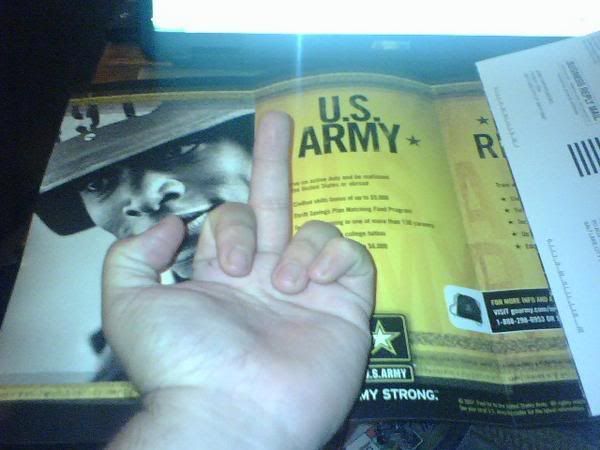




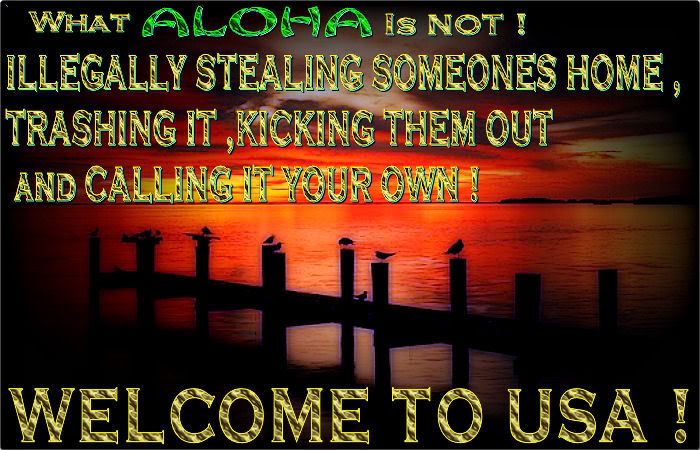


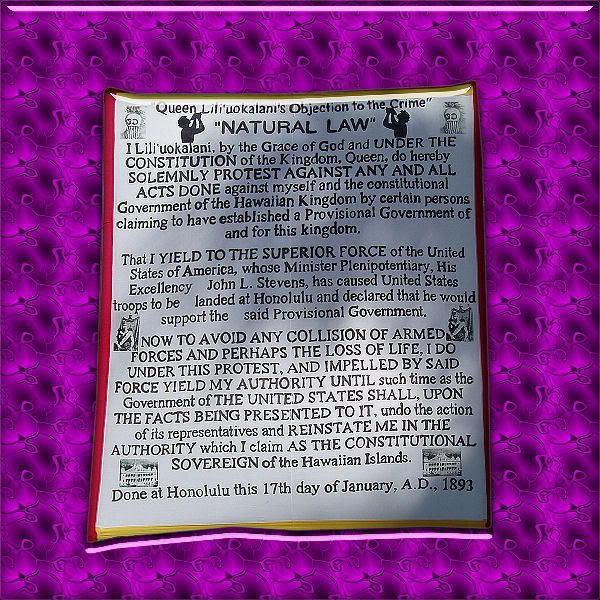
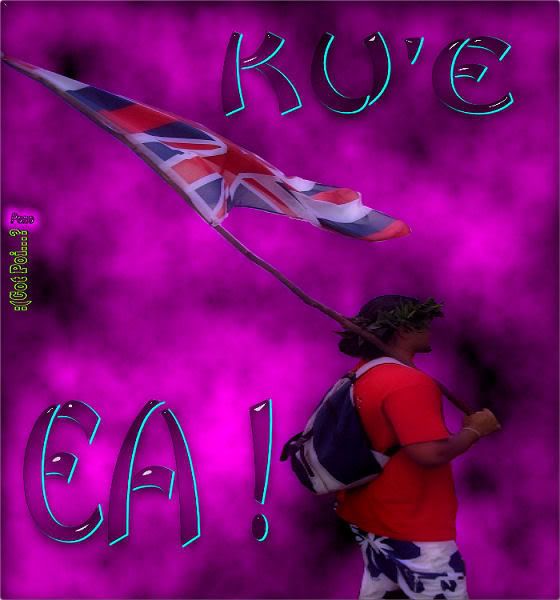
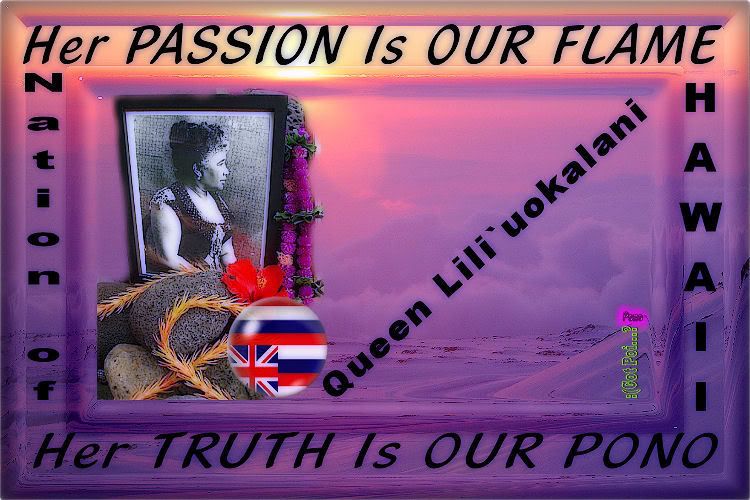
 PLEASE REPOST ! & STAND UP FOR WHATS RIGHT! " BE PONO" :).."KU I KA PONO".... ......The following was written by Hale Mawae, who asked me to help him spread it around:Aloha mai kakou,An article was published today in The Garden Island Newspaper of Kauai, statingthat the land developer, Joe Brescia, still intends to build over the ancient burialsof women and children at Naue despite not having clear title to the land.
PLEASE REPOST ! & STAND UP FOR WHATS RIGHT! " BE PONO" :).."KU I KA PONO".... ......The following was written by Hale Mawae, who asked me to help him spread it around:Aloha mai kakou,An article was published today in The Garden Island Newspaper of Kauai, statingthat the land developer, Joe Brescia, still intends to build over the ancient burialsof women and children at Naue despite not having clear title to the land.



 Not surprisingly, the January 2007 issue of the American Journal of Imperial Law--otherwise known as the self-styled American Journal of International Law but founded and still operated by U. S. State and War Departments’ apparatchiks and their professorial fellow-travelers-- published an article by Harvard Law School’s recently retired Bemis Professor of International Law Detlev Vagts (who only taught me the required course on Legal Accounting) arguing in favor of the Pentagon’s Kangaroo Courts System on Guantanamo despite the fact that they have been soundly condemned by every human rights organization and every human rights official and leader in the entire world as well as by the United States Supreme Court itself in Hamdan v. Rumsfeld (2006).
Not surprisingly, the January 2007 issue of the American Journal of Imperial Law--otherwise known as the self-styled American Journal of International Law but founded and still operated by U. S. State and War Departments’ apparatchiks and their professorial fellow-travelers-- published an article by Harvard Law School’s recently retired Bemis Professor of International Law Detlev Vagts (who only taught me the required course on Legal Accounting) arguing in favor of the Pentagon’s Kangaroo Courts System on Guantanamo despite the fact that they have been soundly condemned by every human rights organization and every human rights official and leader in the entire world as well as by the United States Supreme Court itself in Hamdan v. Rumsfeld (2006).